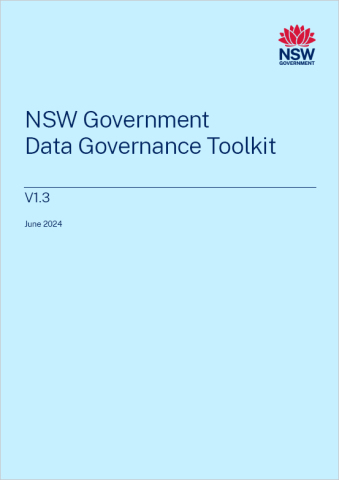Module 10: Technology and Tools
What is it?
With the increasing speed, volume and complexity of data, it is becoming more and more challenging for humans to manage and use data in a cost-efficient and timely way.
Although technology is not a solution on its own, it can be a significant enabler of data governance by simplifying and automating data management practices. When used appropriately, the right tools can assist with data monitoring and management, data security and privacy protection, and data lineage tracking. Tools can also be used to improve the quality of the data with automated validation, data cleansing and data enrichment.
Why is it important?
Data governance systems that rely heavily on humans to manually manage and monitor data, face much higher risks than systems that automate data management practices. Despite good intentions, human error almost inevitably creeps into data processes. These errors can lead to false and duplicated information, and ultimately undermine the agency’s data governance efforts. While automating data governance won’t remove the risks of this entirely, it can help agencies discover, manage and monitor these risks more easily.
Technology solutions can also increase operational efficiency by freeing staff from manual, time-consuming and inefficient processes.
What good looks like
- Automated: data governance policies and processes and data management workflows are automated, where appropriate.
- Enterprise-wide: technologies break down organisational data silos and are implemented enterprise-wide, where appropriate.
- Interoperable: technologies support standard formats allowing interoperability across the organisation.
- Secure: technologies are compliant with security standards and ensure the privacy and protection of data holdings and use.
- Future-proofed: agencies consider their potential future needs as well as changes in regulations, technologies and other factors when selecting tools.
How to achieve good practice
Suggestions: regularly monitor data quality to make sure data is accurate and reliable. Use data quality metrics or assessments to identify and address issues.
- Control and monitor data access and security.
- Develop documentation and reporting of activities to ensure transparency.
Adhere to the “people and process before technology” approach by ensuring that data governance processes are well-defined before they are automated with technologies.
Assess the current state of technical capabilities and architecture of the organisation and identify and prioritise focus areas for improvement and automation.
When selecting technologies to support data governance efforts, agencies should consider:
- Is it open source, scalable, interoperable and easy to integrate with the organisation’s existing business processes?
- Does it meet government standards regarding data sovereignty, privacy, and cyber security?
- Can it provide effective data quality management (i.e. rules, profiling, reporting)?
- Does it provide metadata support for document information security classification and data lifecycle management?
- Does it assign and manage data governance roles and responsibilities?
- Can you define and manage data management workflows and track progress of data governance activities?
Gain buy-in from the intended users of the technology before implementing it.
For a data governance tool to be effective, the staff using it must believe in the business value of the tool.
Ensure the implementation of the tool is accompanied by education, training, documentation and technical support.
Ensure ongoing monitoring and maintenance of tools.
Questions to ask yourself
| What specific technologies are being used to support data governance initiatives, and how do they align with the overall data governance strategy? |
| How does the technology facilitate data discovery, classification, and cataloguing? Does it provide a comprehensive view of all data assets within the organisation? |
| How does the technology align with regulatory and legislative requirements - e.g., data storage and data deletion requirements |
| How does the technology ensure data quality and integrity? What measures are in place to identify and address data anomalies or errors? |
| How does the technology support data privacy and security? What encryption and access controls are in place to protect sensitive information? |
| Does the technology enable data access and sharing based on defined permissions and roles? How is data access governed and audited? What burden is placed on the team to activate this? |
| What data monitoring and tracking capabilities does the technology offer? How does it detect and report unauthorised access or suspicious activities? |
| How does the technology support data retention and disposal policies? Can it automatically enforce data retention schedules? |
| Does the technology integrate with existing data systems and applications, or does it require significant changes to the current infrastructure? |
| What level of scalability does the technology provide? Can it handle growing data volumes and evolving data governance needs? |
| How user-friendly and intuitive is the technology for data governance stakeholders? Is training required for effective use? |
| Does the technology provide data lineage and audit trails, allowing for traceability and accountability in data management? |
| What analytics and reporting capabilities does the technology offer to track data governance performance and compliance? |
| How does the technology address cross-border data transfer and comply with international data regulations, if applicable? |
| How is data governance technology managed and maintained? What are the support and update processes? |
| What are the potential risks associated with the technology's implementation and usage, and how are they mitigated? |
| How does the technology handle data governance in a multi-cloud or hybrid cloud environment, if applicable? |
| Does the technology align with industry standards and best practices for data governance and security? |
| How does the technology assist in automating routine data governance tasks and processes, freeing up resources for more strategic initiatives? |
| How does the technology facilitate collaboration among different stakeholders involved in data governance efforts? |
| What are the total cost of ownership (TCO) considerations associated with the technology, including implementation, maintenance, and potential upgrades? |
